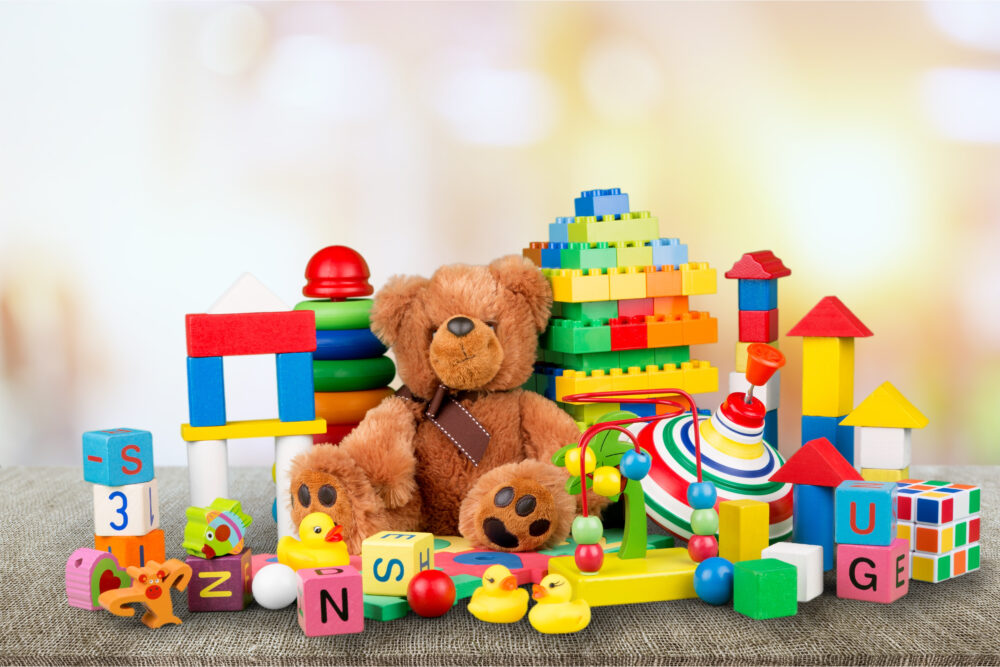Child Product Recalls Over High Lead Levels Reached Record Number In 2022
The report indicates 19 child product recalls in 2022 involved the risk of lead exposure, which is the highest number recorded in at least a decade.

Amid growing evidence about the long-term side effects of lead poisoning, a consumer advocacy group indicates that a record number of child products were recalled last year due to high levels of lead, which could pose a danger in the home.
The nonprofit organization, Kids In Danger (KID) released their annual Hidden Hazards: 2022 Children’s Products Recalls report on March 14, warning that the number of children’s products recalled in 2022 was at the highest levels seen since 2013, and included the most lead-related recalls in the last ten years.
Lead is a toxic heavy metal, which can cause a number of serious injuries for developing children, including nervous system injury, brain damage, seizures or convulsions, cognitive impairment, coma and even death.
In recent years, health officials have determined that there is no safe blood lead level for children, and even brief exposure can lead to lead poisoning, having a substantial impact on the child’s ability to learn and develop.

Learn More About
Children diagnosed with lead poisoning after exposure to peeling or chipping lead paint in a rental home may be entitled to financial compensation and benefits.
Learn More About this Lawsuit SEE IF YOU QUALIFY FOR COMPENSATIONAccording to this recently released report, KID’s states that the U.S. Consumer Product Safety Commission issued a total of 293 recalls in 2022, with 100 of the recalls impacting 5,566,299 units of children’s products.
Of the children’s products recalled in 2022, there were at least 33 recalls involving children’s toys that posed hazards ranging from injuries and entrapments to containing levels of lead that exceeded the maximum allowable limits set forth by federal regulations, with 19 recalled due to lead content.
There were only two such recalls issued in 2013, with 2022 reaching the highest number of child products recalled for lead in the past decade. Of the nineteen children’s products found to have high levels of lead content, eight involved children’s toys.
While KID recognized the efforts of the CPSC, the organization warned that many parents and caregivers may never learn of a children’s product recall, or connect exposure to that product to lead poisoning injuries, the group warns. KID indicated this could increase the risk of prolonged exposure to lead and other hazards.
As a result of the increased risk of lead in toys and the severity of the injuries posed to children, the organization is calling for the impacted companies to begin using all tools at their disposal to notify customers, including the use of social media, direct notifications and increase marketing efforts to spread the information and retrieve the impacted products.
KID is also calling for the CPSC to be better funded to allow the agency to strengthen its enforcement efforts and implement better ways to track the progress of recalls.
Lead Risks in Baby Food
Toys and other children’s products are not the only concern about lead exposure risks to children. Following a Congressional report that identified four different types of toxic metals in baby food products sold by a number of different companies, which have been blamed for causing autism and ADHD in a number of children, federal health officials have announced new draft guidance on the allowable levels of lead in food products intended for children under the age of two.
The U.S. Food and Drug Administration (FDA) announced new action levels for lead in baby food on January 24, further advancing goals set forth in the agency’s Closer to Zero program, which seeks to eliminate toxic levels of metal in baby food.
In what is being seen as the first substantial step toward making baby food safer under the FDA’s 2021 “Closer to Zero” plan, officials have issued the draft guidance for the baby food industry on action levels for lead in processed foods intended for babies and children under two years of age.
However, the FDA’s efforts have been criticized as too late for many families who are now filing baby food autism lawsuits and baby food ADHD lawsuits claiming manufacturers marketed baby foods containing toxic substances as safe for infants and children without disclosing known metal contamination risks.
Get more articles like this sent directly to your inbox.
"*" indicates required fields






0 Comments